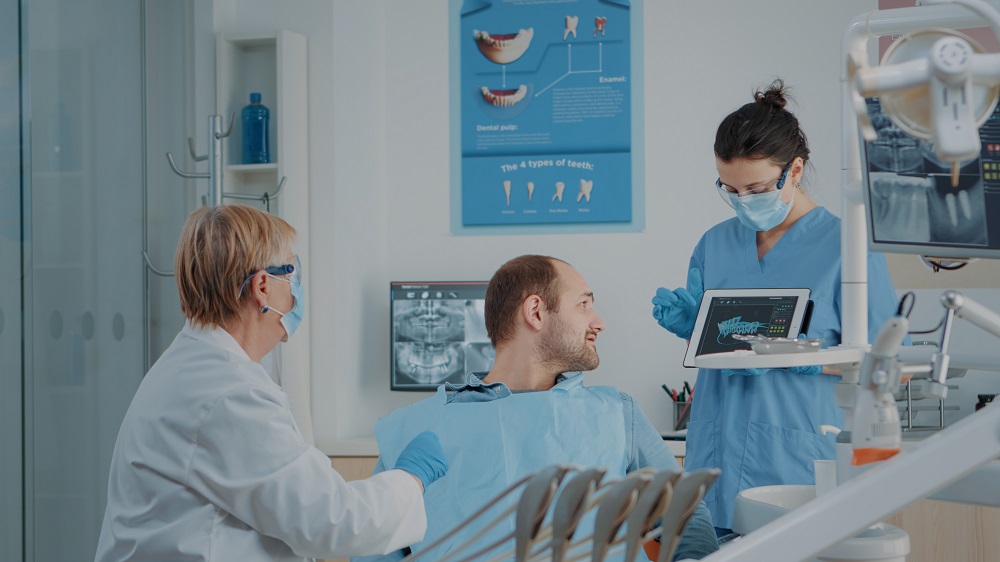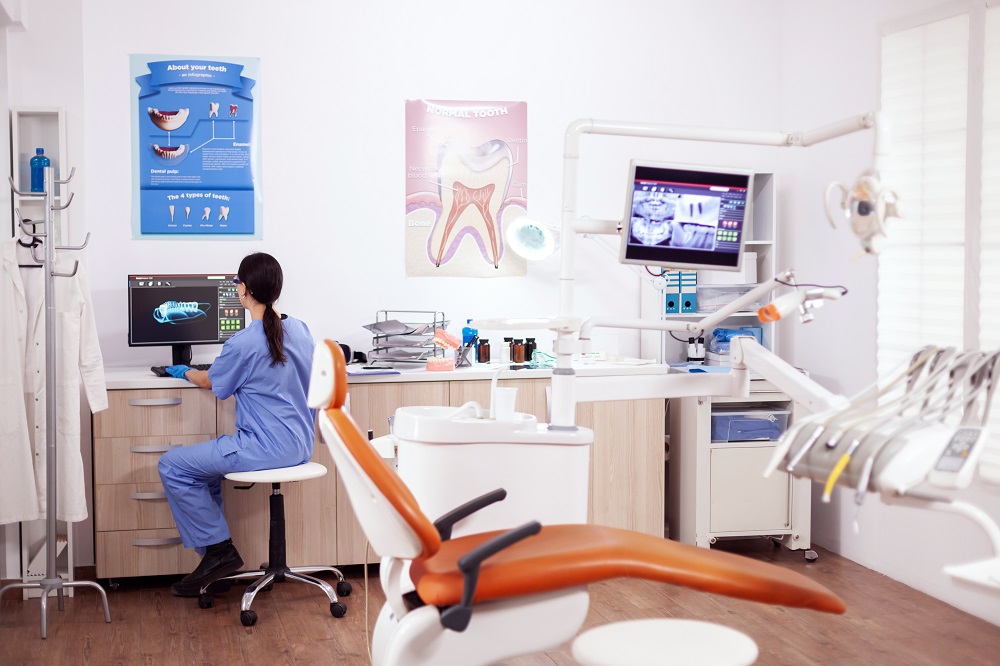Complete guide to implement EMR for dental clinic
The increased awareness of oral health nowadays makes more and more people proactively seek dental care, leading to a significantly larger patient volume. As a result, many dental clinics struggle to handle a huge administrative burden with numerous piles of paper-based medical records. This is where dental EMR comes in as a savior. We will walk you through the steps to successfully implement an EMR system in your dental clinic and help you find out which EMR solutions suit best for your organization.
What is EMR?
EMR (Electronic Medical Records) is the digital version of a patient's medical history within an organization. EMR is considered a potential transformer of the healthcare industry because apart from the ability to store and track medical data, EMR can also automate billing procedures, appointment scheduling, and data analysis. All of these breakthrough features of EMR streamline the whole workflow and help healthcare providers make data-driven decisions, leading to greater patient outcomes.
Why EMR is a must-have system in dental clinics?
Increase Efficiency and Workflow
Dental EMR systems eliminate the need for manual paper-based processes, including appointment scheduling, treatment planning, clinical documentation, and billing. By automating these tasks, dental practices can significantly reduce administrative burden and increase overall efficiency. This, in turn, allows staff to focus more on patient care, leading to improved productivity.

Provide effective Documentation and Record-keeping
By implementing EMR systems, dentists can easily document clinical findings, treatment procedures, and progress notes electronically. This reduces the risk of missing records, especially in emergency situations. Additionally, digital records are always available and easily searchable, making it faster to retrieve and reference patient information.
Streamline Communication and Collaboration
EMR allows dental professionals in a dental clinic to share real-time patient information quickly and securely. Consequently, they can avoid moving around the hospitals too much or duplicating tests. This streamlines communication and collaboration between dental practices, leading to enhanced coordination and continuity of care.
The process of implementing dental EMR systems
Assess Clinics’ needs: You should make a thorough evaluation of your current clinic's requirements and workflows to identify the inefficiencies that an EMR system can make a significant impact on. Then, you determine the specific functionalities you need, such as patient scheduling, treatment planning, clinical documentation, billing, and reporting.
An important part that many clinics forget is assessing their budget and resources to implement EMR. If you don’t know exactly where to start, choosing a reliable vendor to support you is probably a wise choice. With nearly 12 years of experience creating numerous curated systems for many partners from all over the world, Ominext can help you discover your needs and assist you in every step of the EMR implementation.
Train staff: It’s crucial to provide comprehensive training to all staff members on how to use the new EMR system effectively. Apart from the initial training sessions, you should ensure that staff will be given ongoing support, like addressing any concerns or questions of the staff throughout the implementation.
Migrate and Integrate Data: To ensure that the data is smoothly transferred and accurately integrated, you need to work closely with your vendor. Remember to test the EMR system's integration capabilities with other existing systems, such as dental imaging software or practice management systems, to ensure seamless data exchange.

Monitor and Evaluate: After implementing, you should continuously monitor the EMR system to see whether the functions are working properly and meet your dental clinic’s requirements. We recommend you seek feedback from staff and patients to identify any areas for improvement. Regularly reviewing key performance indicators, such as staff productivity, patient satisfaction, and revenue cycle management, is a must to assess the impact of the EMR system on your clinic's operations.
Packaged EMR software vs custom EMR services: What is the most optimal solution for dental EMR implementation?
Packaged EMR software
Packaged EMR software are EMR systems that the vendors have already built. These systems usually come in packages with various compatibility, functionalities, and prices.
Pros
Time-saving: Ready-made EMR can be purchased at any time and the system can be installed immediately.
Cheap initial costs: Each functionality of the system is not tailored so the fees are way cheaper compared to custom EMR services.
Cons
Poor scalability: It might be impossible to add on other features or expand the system later on because you are not sure whether the packaged EMR is compatible with those functionalities.
Limited controls: The technology belongs to the vendors and it’s nearly impossible to adjust the EMR models because the source codes of most of the system components are closed. This leads to many unexpected errors while clients are using the system and possibly costs a huge amount of money to fix those errors.
Not industry-focused: Most of ready-made EMR systems are just the general solutions that can be applied to any industry. This also means that the systems are not tested specifically in dental circumstances.
Custom EMR services
Custom EMR services are the EMR solutions tailored based on each clinic’s specific requirements. Professional vendors like Ominext will work closely with clients to identify their issues and needs as well as thoroughly discuss joint planning of the EMR implementation and certain custom features of the system.
Pros
Competitive advantage: A Custom EMR system is developed for you only with curated functionalities designed to fit exactly your needs. This makes your EMR unique and outstanding in the market with unique features.
High scalability: Tailor-made EMR enables you to incorporate components into your system at any time. With custom EMR, you can save an enormous amount of money by avoiding building an entirely new system whenever you need to update new features.
Enhanced User Adoption: Custom EMR solutions are able to align with the existing workflows of dental clinics because these systems are personalized for the clients to easily use.
Cons
High initial investment: Quality EMR solutions made by professionals with great expertise definitely come at a price. However, in the long term, this approach is worth the investment as custom EMR significantly leverages your working process.
Time-consuming: Because the system is made from scratch, it takes dental clinics and vendors lots of time to create the most optimal solution.
Conclusion
Implementing an EMR system in your dental clinic can greatly enhance efficiency, streamline workflows, and improve patient care. By carefully assessing your clinic's needs, choosing the right vendor, adequately preparing your staff, ensuring data migration and integration, and monitoring and evaluating the implementation process, you can successfully transition to a digital environment and reap the benefits of an efficient EMR system.





